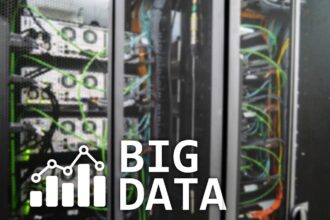When you study the shifts, evolutions, and trends in marketing over the past five years, it’s obvious that the trajectory is firmly pointed towards automation, personalization, and efficiency. Almost any new marketing technology, platform or product, emphasizes one or more of these focal points. And if you study it even more closely, you’ll also notice that many of the advances in marketing are centered on big data and the use of analytics.
The Push for Automation
In reality, 2014 wasn’t that long ago. In the realm of marketing – which is a rapidly evolving field – it seems like eons ago. So when experts in the industry made predictions that big data would one day be at the heart of every digital marketing strategy, they weren’t necessarily stating the obvious. At that time, you had big data on one side and marketing automation on another. There wasn’t a whole lot of crossover. Today, they’re virtually inseparable. The gap has closed and they’re now highly dependent on one another.
Big data and marketing automation work in unison to provide businesses with more effective ways to collect and organize data that it may be systematically used in advanced marketing strategies that reach micro audiences where they are. It allows marketers to cut out the guesswork and tailor messaging so that it hits with far greater accuracy. This saves time, improves results, and drives better brand engagement.
As Oktopost explains, “Big data is no longer a way to enhance marketing automation; it is the only way to make it work effectively. Without the right data, B2B marketers are blindly automating tasks without any consideration of buyer behavior and preferences – they are automating inefficiencies.”
Considering that inefficiencies hurt brand loyalty and the bottom line, data-backed marketing automation has positively changed the “game” forever.
Using Data to Drive Marketing Automation
“Studies show that 60% of occupations can save 30% of their time with automation – leading to more time for innovation and company growth,” ONTRAPORT points out. “The key to a successful automation strategy is discretion when determining what to automate – and what not to.”
As your business seeks to adopt the right marketing automation solutions and processes, you’ll have to be conscious of where you’re drawing the line. In addition to determining what needs to be automated, you have to be thoughtful in what you choose not to automate.
Here are a few thoughts on the topic:
1. Capture the Right Data
You can’t use data to drive your marketing automation efforts if you aren’t collecting the right data. This means you need a documented plan of attack for how you’ll gather data and which metrics you’ll chase down. More specifically, you need a method for mining your data and picking out the important pieces in the midst of the irrelevant details. Much like trying to find a needle in a haystack, this is difficult without a plan.
“With the omnipresence of analytics tools like Google Analytics, the issue is rarely about the creation of data, but rather about its accessibility,” expert Louis-Philippe Mathieu writes. “By identifying the data that will be relevant to your automation processes, you can then store this data in the right place and build powerful processes with minimal effort.”
2. Use Automation to Maintain Communication
Data shows that 53 percent of marketers find ongoing, personalized communication with existing customers to be helpful in creating moderate to significant revenue impact for their businesses.
Because manual communication with each individual customer is highly inefficient and unrealistic, automation can be used to forge these long-lasting relationships. When data is strategically leveraged to send automated messages that are triggered by certain predefined factors, you can expect significantly less churn, greater revenue, and more engagement with marketing content. Ultimately, this all paves the way for future sales.
3.Implement Real-Time Triggers
With marketing, you don’t always get multiple opportunities to reach your audience. If you want to increase your chances of seeing meaningful results, you should try using data to automate real-time triggers that move customers to action based on their individual experiences.
Marketing automation without personalization is ineffective. Take the time to understand how different users engage with your brand and then use data to create response triggers that are statistically proven to work based on the original input of the user.
For example, if a user visits your site for the first time and opts into your email form, send them a targeted email right away. If that user also visits one of your social media profiles within the next 24 hours, have your CRM platform triggered so it sends a direct message. Little things like this make a big difference.
Stay Focused and Tuned In
No matter how automated your marketing efforts become, you can’t set it and forget it. You have to stay focused and tuned in with what’s happening on a granular level. Otherwise, you risk losing touch with who your audience is and what motivates them.







